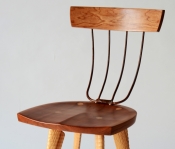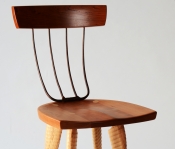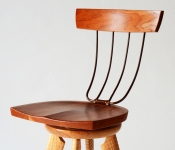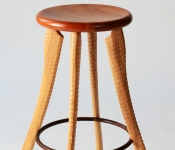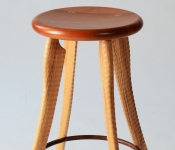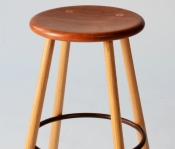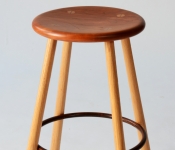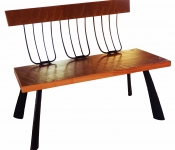The Ax Handle Stool lives in the heart of Brad’s design concept.
New life and purpose is given to the ax handles that Brad had seen during his childhood on the farm. Solid ash wood is turned on a century old ax handle lathe. A ripple texture is created as the lathe cuts a continuous spiral down the length of the wood blank. These legs are then sanded by hand and cut to length. They are then attached to the solid cherry seat by a through tenon fastened with a solid walnut wedge. The seat is sanded to a smooth contour that everybody would find comfortable. Your feet can find a home on the solid steel footrest.
“Furniture makers frequently ride the coattails of easily recognized styles such as Shaker, Country or Arts and Crafts.”In my work, I intentionally try not to be pigeonholed into an existing furniture design category. What I try to do is make furniture that has not been seen before, but still retains some familiarity. That familiarity is gained through the use of good proportions, honest construction and old-fashioned usefulness.
My basic concept is to use “off the shelf” parts in ways that were never intended—as elements in the furniture.Because the shop is located on a farm, I decided to develop that as a “theme,” which is why the parts are farm related.
The idea is to make something special out of something ordinary.Ax handles seemed to be the perfect chair leg with their gentle S-curve and knobby foot. Pitchforks make ideal supports for chair backs and they even have some spring when you lean back. Disc blades, used on farm equipment, are equally good as bases for my coatrees, lamps, and music stands.These “parts” have become significant elements in my design vocabulary and give the furniture its distinctive Bradford “look.”
Photography: Juris Mardwig

